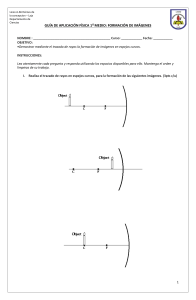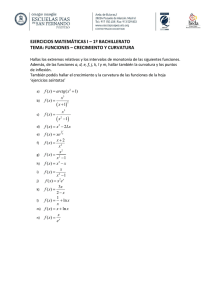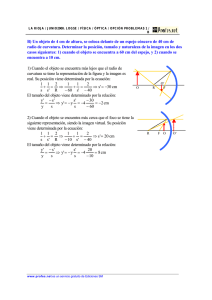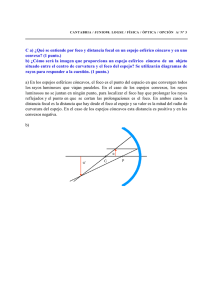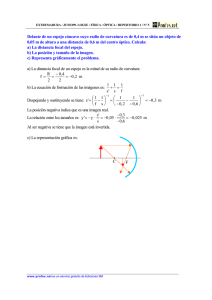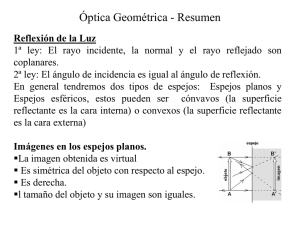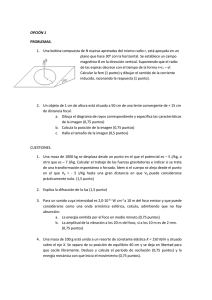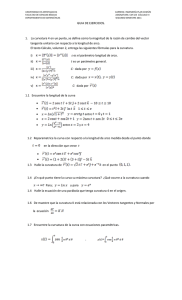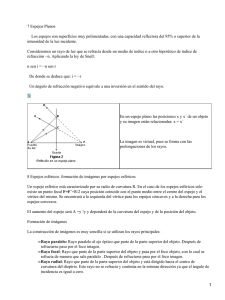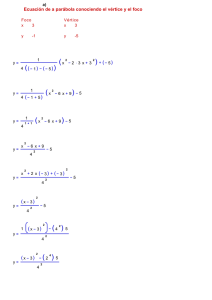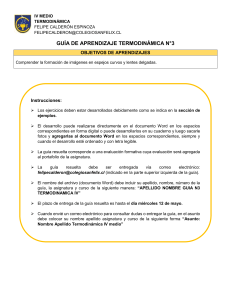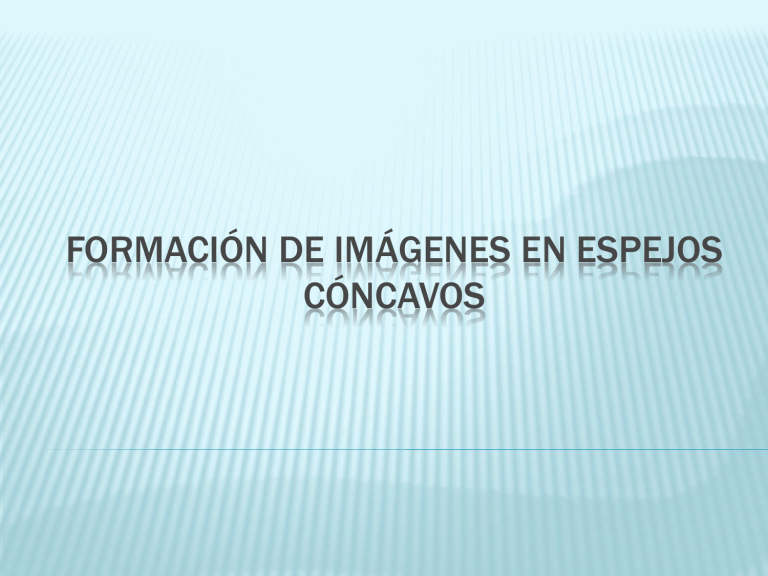
FORMACIÓN DE IMÁGENES EN ESPEJOS CÓNCAVOS RAYOS NOTABLES C f C f C f CONCLUSIÓN: “Todo Rayo que incide paralelo al eje principal, se refleja pasando por el foco”. C f C f C f CONCLUSIÓN: “Todo Rayo que incide pasando por el foco, se refleja paralelo al eje principal,”. C f C f C f CONCLUSIÓN: “Todo Rayo que incide pasando por el centro de curvatura, se refleja por el mismo centro de curvatura”. C f C f C f CONCLUSIÓN: “Todo Rayo que incide pasando por el vértice, se refleja con el mismo ángulo”. FORMACIÓN DE IMÁGENES En los espejos cóncavos, las características de la imagen dependen de dónde esté situado el objeto. Veamos… ¿DÓNDE SE FORMA LA IMAGEN CUANDO EL OBJETO ESTÁ SITUADO ENTRE EL INFINITO Y EL CENTRO DE CURVATURA? C f La imagen : Se forma entre el centro de curvatura y el foco. Es de menor tamaño Es real Es invertida ¿DÓNDE SE FORMA LA IMAGEN CUANDO EL OBJETO ESTÁ SITUADO EN EL CENTRO DE CURVATURA? C f La imagen: Se forma en el centro de curvatura. Es de igual tamaño Es real Es invertida ¿DÓNDE SE FORMA LA IMAGEN CUANDO EL OBJETO ESTÁ SITUADO ENTRE EL CENTRO DE CURVATURA Y EL FOCO? C f La imagen : Se forma entre el centro de curvatura y el infinito. Es de mayor tamaño Es real Es invertida ¿DÓNDE SE FORMA LA IMAGEN CUANDO EL OBJETO ESTÁ SITUADO EN EL FOCO? C f La imagen: No existe, pues nunca se cortan los rayos reflejados. ¿DÓNDE SE FORMA LA IMAGEN CUANDO EL OBJETO ESTÁ SITUADO ENTRE EL FOCO Y EL VÈRTICE? C f La imagen: Se forma entre el foco y el vèrtice. Es de mayor tamaño Es virtual Es derecha
